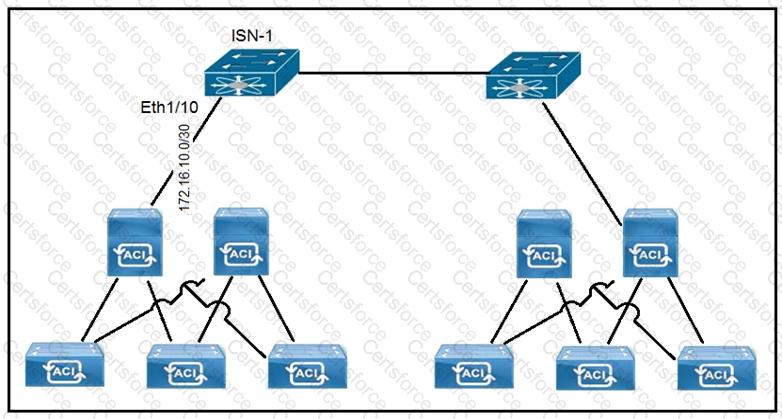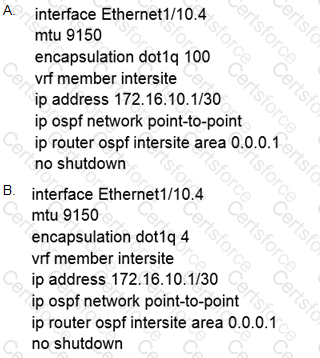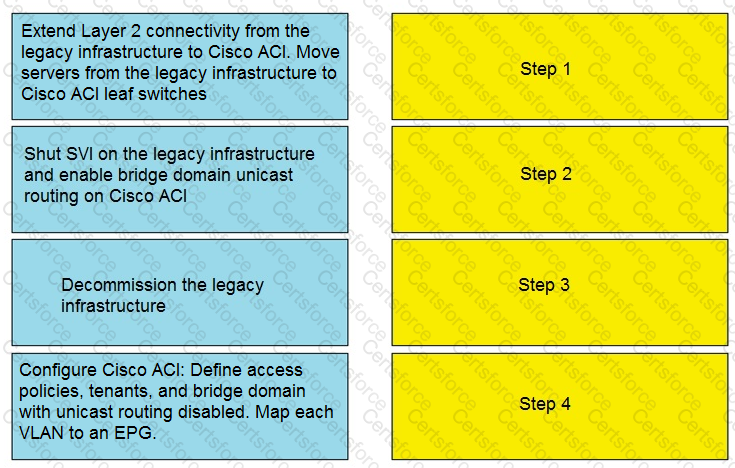An engineer creates the objects that must be deployed at each site in Cisco ACI Multi-Site Orchestrator. Which action should be taken before the schema can be associated with the newly configured site?
Refer to the exhibit.

A customer implements Cisco ACI Multi-Site with default MTU settings between two sites. Which configuration should be applied on the interface Eth1/10 on the ISN-1 device?


What is a characteristic of a stretched bridge domain solution between Cisco ACI sites with Layer 2 flood disabled?
In a Cisco ACI Multi-Site fabric, the Inter-Site BUM Traffic Allow option is enabled in a specific stretched bridge domain. What is used to forward BUM traffic to all endpoints in the same broadcast domain?
Where are STP BPDUs flooded in Cisco ACI fabric?
What are two characteristics of Cisco ACI interaction with MSTP? (Choose two.)
Refer to the exhibit.

How are the STP BPDUs forwarded over Cisco ACI fabric?
An engineer must migrate servers from a legacy data center infrastructure to a Cisco ACI fabric. Drag and drop the steps from the left into the order that they must be completed on the right to ensure the least amount of downtime.

An engineer configures a new Cisco ACI Multi-Pod and must set up the link between the spine and the IPN device. Which three actions should be taken to accomplish this goal? (Choose three.)
Refer to the exhibit.

A network engineer configures a Layer 4 to Layer 7 device for an outside routed firewall that is connected to POD-1 inside a Cisco ACI fabric that consists of two pods. All traffic from POD-1 or POD-2 that uses the L3Out should pass through the routed firewall. Which Function Type must be implemented in the service graph for POD-2 to use L3Out?